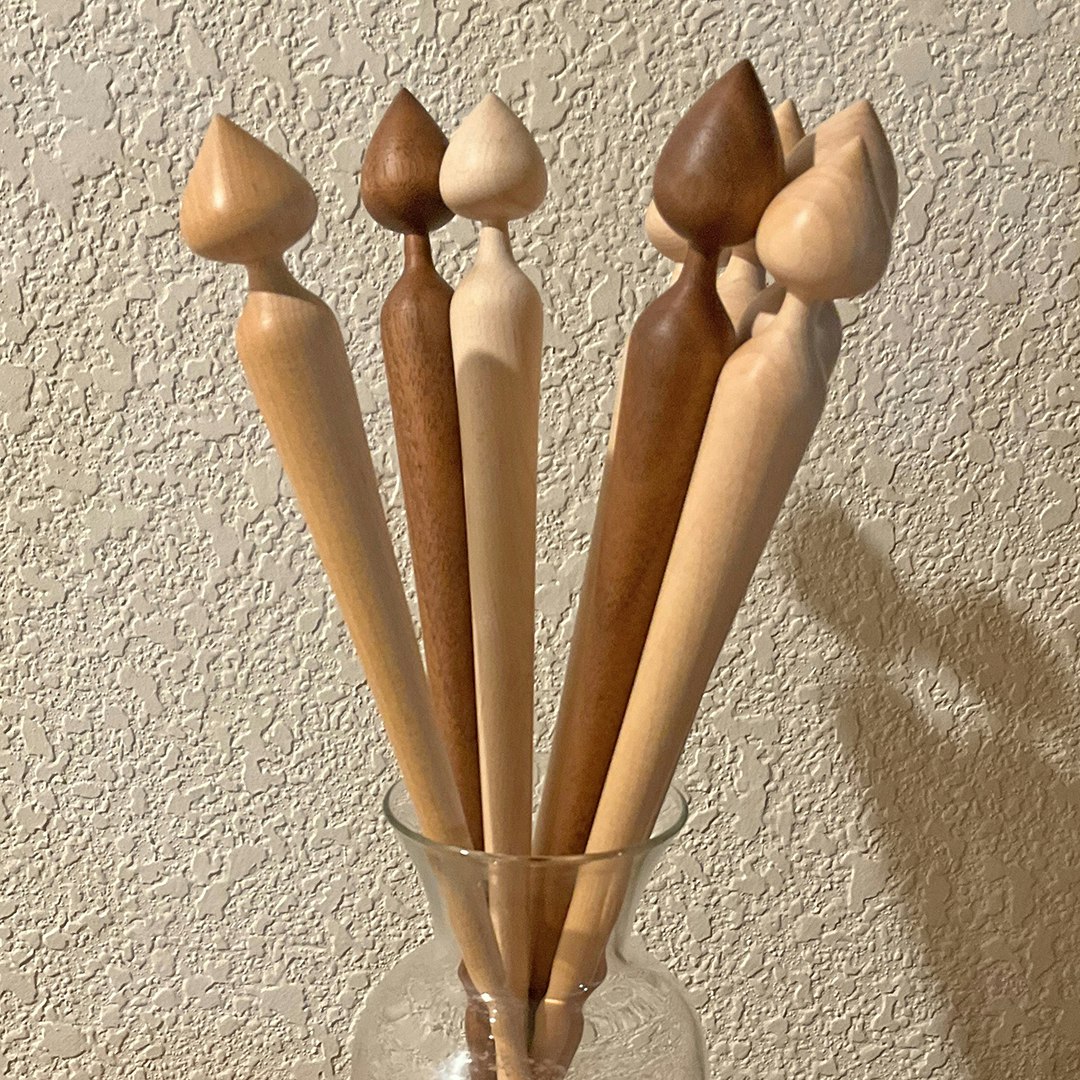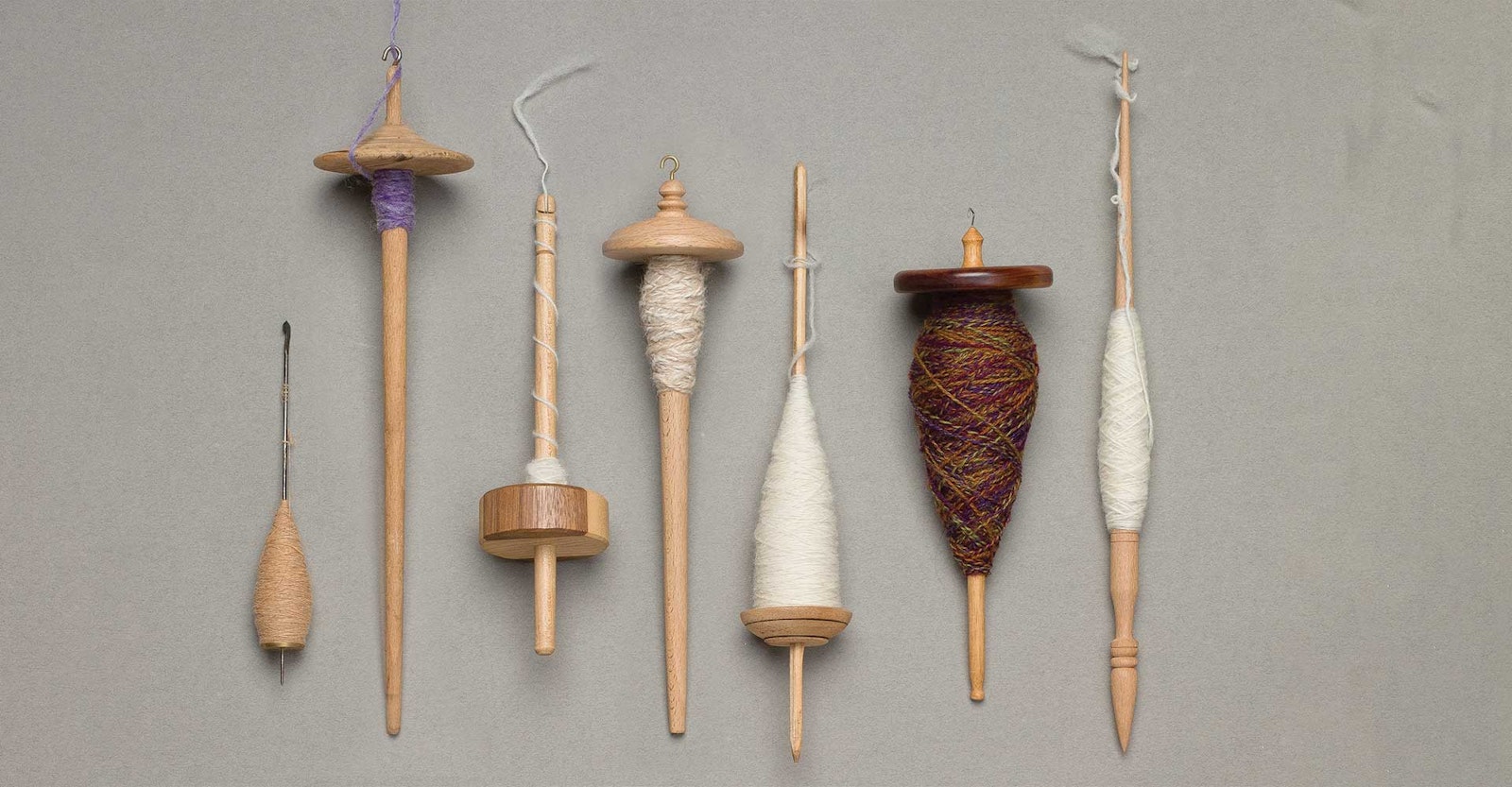It is common knowledge that larger yarns take less twist and are quicker to produce. If you want yardage, spin large. However, the old adage “not all wheels spin all yarns” applies to spindles as well. Your handspindle performs in a range of yarn sizes. Let’s look at that takli again: For the size yarn that the takli produces (garment-weight fine singles), it is 3–5 times faster than a treadled wheel. Although you may be spinning fine yarns, your production rate can be 3 yards per minute or better.
Takli and support bowl for high-speed spinning. Photo by George Boe.
Spindle spinning is not for the faint of heart. It involves coordination and practice to become familiar with the tool, but none of the movements are particularly difficult. You just have to allow yourself some time to get the “feel” of it, to learn by doing. Try spinning several fibers, preparations, and yarn sizes to get an idea of your spindle’s behavior and find its particular sweet spots.
Expert Advice for Spinzilla Spindle Spinning
- Pick the right spindle, the one with which you are familiar and comfortable. You should already know its balance, have learned to put in twist, and have found a simple, efficient way to get the yarn off it, so you can be ready to fill it again.
- Doffing—taking the yarn off—the spindle can be time-consuming. If you don’t already have a spindle stand or lazy kate to unwind it quickly, consider what it would take to get yarn off your spindle quickly and efficiently. You could choose a Turkish spindle, which winds your yarn onto the spindle into the shape of a ball. The central shaft of the spindle slides out of the ball and cross arms, which in turn pull free of the ball. The spindle is reassembled in moments, and you are back to spinning in no time.

A contemporary Turkish-style spindle by Norm Hall; at right, Judith’s much-loved antique Turkish spindle (with a makeshift shaft). Photo by Joe Coca.
- If your spindle has no hook above the stored yarn and has a tapered shaft coming to a point, then the package can be slipped off the spindle when it becomes too large and unwieldy, easily freeing the spindle for more fun.
- I saw an old spindle holder from Hungary that contained 13 spindles, many of them plainly duplicates. Think of the mighty wisdom: a clutch of spindles the same dimension and weight! When you get on a roll spinning, the spindle fills quickly. How fine it would be to have another equal to grab and continue spinning! And how handy to have a rack to keep them safe and ready! I see a project for the future.

Matching spindles keep the spin going! Photo by Katrina King.
- Put in twist efficiently. If you are using a suspended spindle, use your palm to put twist into your spindle, either with two palms together or with one palm on the spindle laid against your thigh (known as a thigh roll). This charges the spindle with twist more efficiently than flicking it with thumb and first/second fingers. For a real eye-popping view of this technique, see the video Andean Spinning by Nilda Callañuapa Alvarez. When using a support spindle, rest the spindle in a bowl that is mirror-smooth. It reduces the effort to bring the spindle to speed and increases its cast, or the length of time the spindle continues to rotate.
Stephenie Gaustad is the author of The Practical Spinner's Guide: Cotton, Flax, Wool. Her video, Spinning Cotton, is available for download.



